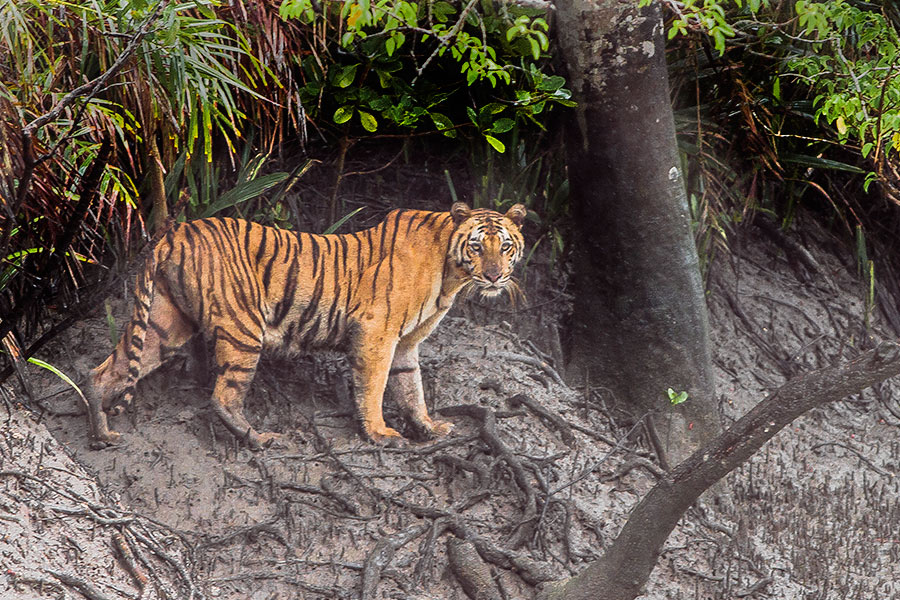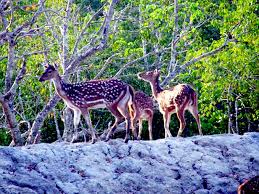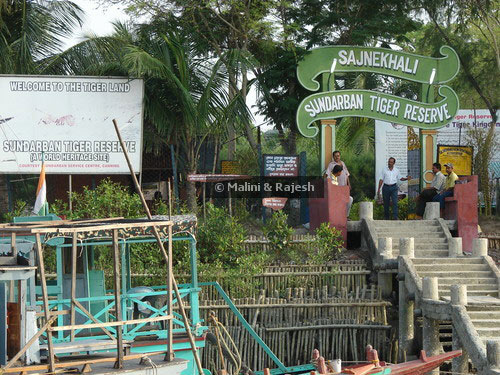Best of India Tours
- Golden Triangle Tour- Best of India & Nepal
- Classical Rajasthan
India Cultural Tours
- Images of North India- Karnataka Heritage
- Rajasthan & Goa Tour
Discover India Tours
- Grand India Tour- North to South India
- Central to South India
Rajasthan Tours
- Classical Rajasthan Tour- Golden Triangle Tour
- Grand Mughal Tour
India Luxury Trains
- Palace on Wheels- The Golden Chariot
- India Deccan Odyssey
- The Indian Maharaja
- Royal Rajasthan on Wheels
Nepal Tours
- Glimpses of Nepal- Buddhist Pilgrimage
- Nepal River Rafting
- Destinations of Nepal
- Nepal General Info
India Wildlife Tours
- North India Wild Life- South India Wildlife
Tibet Tours
- Tibet Monastery Tours- Explore Tibet
- Destinations of Tibet
Spa & Yoga Tours
- Ananda in Himalayas- Yoga & Meditation
Adventure Tours
- Manali Safari Tour- Himalayan Trekking
- Horse Safari
Sunderban
Darjeeling
![]() Kalimpong
Kalimpong
![]() Kolkatta
Kolkatta
![]() Sunderban
Sunderban

Designated as a world heritage site by UNESCO, the Sunderban National Park lies to the south-east of Calcutta in the 24 Parganas district of West Bengal. Sunderban, the world’s largest delta formed by the Ganga and Brahmaputra, is also known for its unique mangrove forest ecosystem. The national park, also a biosphere reserve and home to the Royal Bengal tiger, is spread over an area of 1,330 sq. km. The core area of the park is bound by Matla River on the West, Haribhanga on the east and Netidhopani and Gosaba on the north. The buffer zone, which extends over an area of 885 sq. km, also includes Sajnakhali Wildlife Sanctuary.
Halliday Island and Varanasi Lothian Island wildlife sanctuaries lie to the south of Sunderban but do not form a part of the tiger reserve. The climate of Sunderban is very humid due to its proximity to the Bay of Bengal. During monsoon, which last from mid-June to mid-September, the region experiences a heavy rainfall. After monsoons, the weather is quite pleasant making it a right time to visit Sunderban.
Sightseeing
Moving through the largest estuarine delta in the world is quite a thrilling experience. The flora and fauna of the region are the major attractions here. The mangrove forest presents a unique ecosystem. The wildlife includes the world famous Royal Bengal Tiger, a major attraction in the tiger reserve. Some of the other attractions include chital, crocodile, monkeys, estuarine and marine turtle, dolphins and various kinds of birds.
Excursions
Excursions around the Sunderban National Park take you to the habitats of the other ’residents’ of the Sunderban. You can witness a large variety of birds, animals and reptiles. At Sajnekhali Bird Sanctuary, you get to see birds like spotted billed pelican, cotton teal, herring gull, Caspian tern, grey heron, large egret and others. The Halliday Island is the home to the barking deer while Kanak is the nesting place of Olive Ridley turtles. You can have a look at the ruins of a 400-year-old temple at Netidhopani and relax out at a beautiful tourist complex at Piyali.
Excursions for Sunderban
Sanctuary Visit
The reserve comprises a core zone, a forestation zone and restoration zone and an agri-operation zone. The core zone of 1,300 sq. km represents the National Park and the rest of the area is used for the forestry operations. The variety of the forests that exist in Sunderban include mangrove scrub, littoral forest, saltwater mixed forest, brackish water mixed forest and swamp forest. The flora includes genwa, dhundal, passur, garjan and kankra. The goran trees, whose average height varies between 1.8 metres and 3.6 metres, cover almost the entire region. The tigers form the major source of attraction in the reserve here. The 1980 census put the population of tiger in this reserve close to 400.

Besides the tiger, you can have a look at the Gangetic dolphin, little porpoise, fishing cat, Indian fox, jungle cat, small Indian civet, common grey mongoose, spotted deer, wild pig, Indian flying fox, rhesus monkey and pangolin. Sunderban is also the breeding ground of a large variety of birds. Out here, you get to see heron, egret, cormorant, fishing eagle, white-bellied sea eagle, seagull, tern and kingfisher. The migratory birds like whimprel, black-tailed godwit, little stint, eastern knot, curlew, sandpiper, golden plover, pintail, white-eyed pochard and whistling teal also flock this place. The place is also home to the wide variety of aquatic and reptile life forms that include Olive Ridley sea turtle, hardshelled batgur terrapin, pythons, king cobra, chequered killback, monitor and lizards.
Halliday Island

The Halliday Island Wildlife Sanctuary along with Lothian Island Wildlife Sanctuary lies to the south of Sunderban. The sanctuaries are not the part of the tiger reserve. Halliday is the last retreat of the Barking Deer.
Kanak
Kanak is one of the nesting beaches of Olive Ridley Turtles in Sunderban. The turtles migrate to the shallow coastal waters from a long distance to breed. The turtles are believed to travel upriver as far as 100 km from the sea mouth into the Sunderban.

Netidhopani

The beauty of the mangrove forests and the presence of a large variety of wildlife in this region seem to have attracted even the Gods to this place. At Netidhopani you can have a look at the ruins of a 400-year-old temple. The legends that prevail here lend a mysterious touch to the atmosphere.
Piyali
A beautiful resting place, Piyali is a gateway to the Sunderban situated at a distance of 72 km from Calcutta.

Sajnekhali Bird Sanctuary

The Sajnekhali Bird Sanctuary is situated on the confluence of Matla and Gumdi within the buffer zone that extends over an area of 885 sq km. Here you can have a look at the wide variety of birds, the most popular among them being the spotted billed pelican, cotton teal, herring gull, Caspian tern, grey heron, large egret, night heron, open-billed stork, white ibis, common kingfisher, brahmini kite and paradise flycatcher. A rare winter migrant, Asian dowitcher (Limnodromus semipalmatus), can also be found here.
Among the birds of prey are osprey (Pandion haliaetus), Pallas’s fish eagle (Haliaeetus leucoryphus), white-bellied sea eagle (Haliaeetus leucogaster), grey-headed fishing eagle (Ichthyophaga ichthyaetus), peregrine falcon (Falco peregrinus), Oriental hobby (Falco severus), northern eagle owl (Bubo bubo) and brown fish owl (Ketupa zeylonensis).
Fact File
 Area: 1,330 sq. km (park); 2,585 sq. km (reserve)
Area: 1,330 sq. km (park); 2,585 sq. km (reserve)
 Altitude: 0–10 metres above sea level
Altitude: 0–10 metres above sea level
 Best Time to Visit:December and February
Best Time to Visit:December and February
 STD Code: 03219 (Canning)
STD Code: 03219 (Canning)




